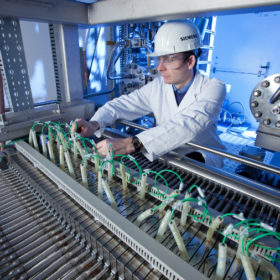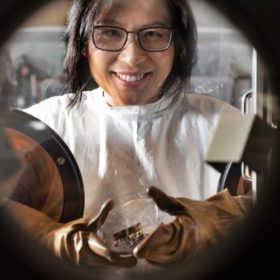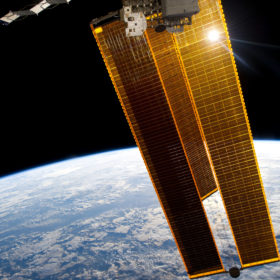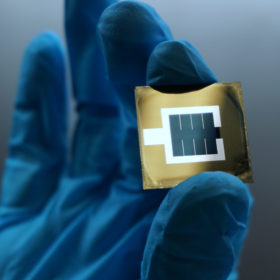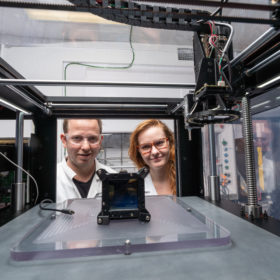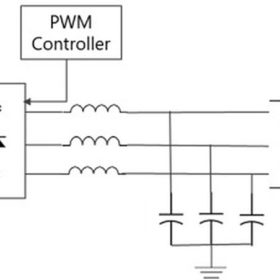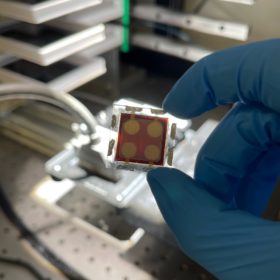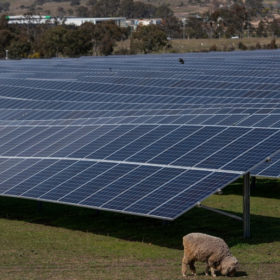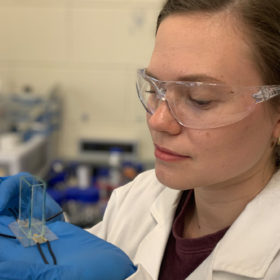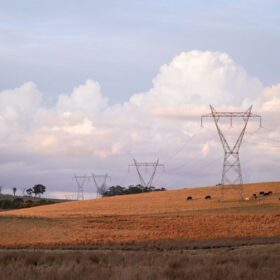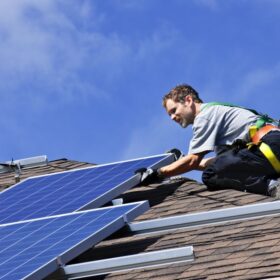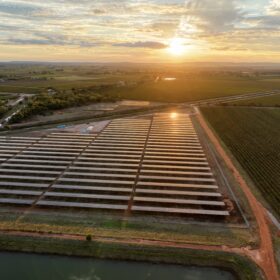New electrolyser to split saltwater into hydrogen
Chinese scientists have developed a new way to split seawater into hydrogen without using a separate desalination process. They incorporated a self-breathable waterproof membrane and a self-dampening electrolyte (SDE) into the electrolyser, so water migrates from the seawater across the membrane to the SDE, without extra energy consumption.
Ultra-low-cost solar research projects receive $41.5 million funding boost
The strength of applications for the Australian Renewable Energy Agency’s ultra-low-cost solar research funding round was so strong the agency had to add $1.5 million (USD 1.03 million) to its original allocation. The strength of competition pushed the process into 2023, but now the 13 research projects aiming to achieve ultra-low-cost solar have been awarded.
UNSW teams with Airbus to develop high-efficiency solar cells for space
Researchers from the University of New South Wales have been tapped to work with European space enterprise Airbus Defence and Space on a strategic research program to fast track the development of high-efficiency solar cells to be used in space.
BIPV shading estimation methods key for uptake, says IEA-PVPS
A recently published report from the International Energy Agency’s Photovoltaic Power Systems Programme on building integrated photovoltaics (BIPV) digitalisation found many industry professionals are unsure of a suitable method for estimating shading in BIPV projects.
Researchers achieved world record 32.5% efficiency for a perovskite tandem solar cell
A group of researchers from Helmholtz-Zentrum Berlin (HZB) has achieved a new world efficiency record for a silicon-perovskite tandem solar cell, with a certified efficiency of 32.5%.
Aussie startup develops 3D electronics printer with potential to reshape solar and storage
Canberra-based startup Syenta has developed a 3D printer capable of printing highly complex and functional electronics like photovoltaics, batteries, sensors and more, promising to do so in ways that are faster, cheaper and using less energy. The technology, which saw an the Australian startup reach the global grand-finals of the global ClimateLaunchpad program, has the potential to reshape both how renewable technologies are manufactured, and their actual performance, the team tells pv magazine Australia.
Lowering grid costs with voltage support from PV inverters at night
US researchers have proposed the use of solar inverters in utility-scale solar assets to replace expensive voltage compensators, in order to provide voltage support at night. They said reactive power from PV inverters could be significantly cheaper and suggested the introduction of incentives to convince PV plant owners.
Australian researchers reveal new pathways for perovskite cells
Controlling the crystallisation process of perovskite thin films is one of the most challenging aspects for upscaling the solar technology but a team of Australian researchers claims to have made a breakthrough, creating next-generation PV cells that have the potential to rival the durability of silicon alternatives.
ANU launches heat maps tool to maximise Australia’s renewables potential
With Australia’s renewable energy share set to reach 82% by 2030, researchers from the Australian National University have launched a new online tool designed to identify the best possible locations for the development of new large-scale wind and solar farms.
Melbourne researchers use sound waves to boost green hydrogen production 14-fold
Researchers from RMIT and the University of Melbourne have discovered high-frequency vibrations can release 14 times more hydrogen compared with standard electrolysis techniques. The discovery also has ramifications for the expensive, rare materials currently used in electrolysers. “With sound waves making it much easier to extract hydrogen from water, it eliminates the need to use corrosive electrolytes and expensive electrodes such as platinum or iridium,” research lead Amgad Rezk said.
